Matthias Scheutz
Dept. of Computer Science, Tufts University
Few-Shot Neuro-Symbolic Imitation Learning for Long-Horizon Planning and Acting
Aug 29, 2025Abstract:Imitation learning enables intelligent systems to acquire complex behaviors with minimal supervision. However, existing methods often focus on short-horizon skills, require large datasets, and struggle to solve long-horizon tasks or generalize across task variations and distribution shifts. We propose a novel neuro-symbolic framework that jointly learns continuous control policies and symbolic domain abstractions from a few skill demonstrations. Our method abstracts high-level task structures into a graph, discovers symbolic rules via an Answer Set Programming solver, and trains low-level controllers using diffusion policy imitation learning. A high-level oracle filters task-relevant information to focus each controller on a minimal observation and action space. Our graph-based neuro-symbolic framework enables capturing complex state transitions, including non-spatial and temporal relations, that data-driven learning or clustering techniques often fail to discover in limited demonstration datasets. We validate our approach in six domains that involve four robotic arms, Stacking, Kitchen, Assembly, and Towers of Hanoi environments, and a distinct Automated Forklift domain with two environments. The results demonstrate high data efficiency with as few as five skill demonstrations, strong zero- and few-shot generalizations, and interpretable decision making.
Incremental Language Understanding for Online Motion Planning of Robot Manipulators
Aug 08, 2025Abstract:Human-robot interaction requires robots to process language incrementally, adapting their actions in real-time based on evolving speech input. Existing approaches to language-guided robot motion planning typically assume fully specified instructions, resulting in inefficient stop-and-replan behavior when corrections or clarifications occur. In this paper, we introduce a novel reasoning-based incremental parser which integrates an online motion planning algorithm within the cognitive architecture. Our approach enables continuous adaptation to dynamic linguistic input, allowing robots to update motion plans without restarting execution. The incremental parser maintains multiple candidate parses, leveraging reasoning mechanisms to resolve ambiguities and revise interpretations when needed. By combining symbolic reasoning with online motion planning, our system achieves greater flexibility in handling speech corrections and dynamically changing constraints. We evaluate our framework in real-world human-robot interaction scenarios, demonstrating online adaptions of goal poses, constraints, or task objectives. Our results highlight the advantages of integrating incremental language understanding with real-time motion planning for natural and fluid human-robot collaboration. The experiments are demonstrated in the accompanying video at www.acin.tuwien.ac.at/42d5.
FLEX: A Framework for Learning Robot-Agnostic Force-based Skills Involving Sustained Contact Object Manipulation
Mar 17, 2025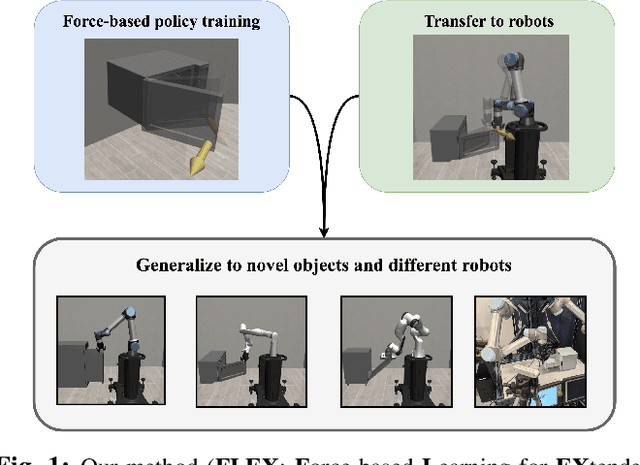
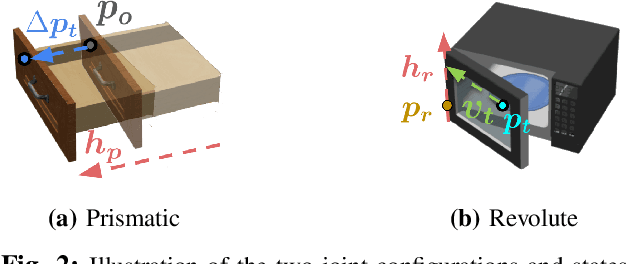
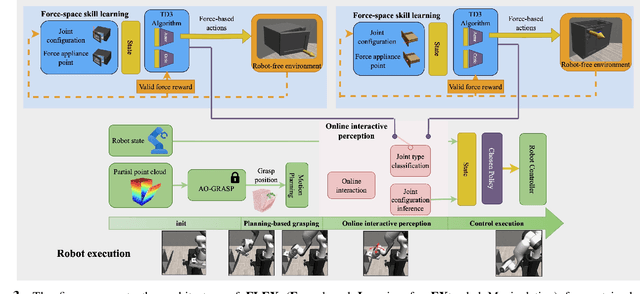
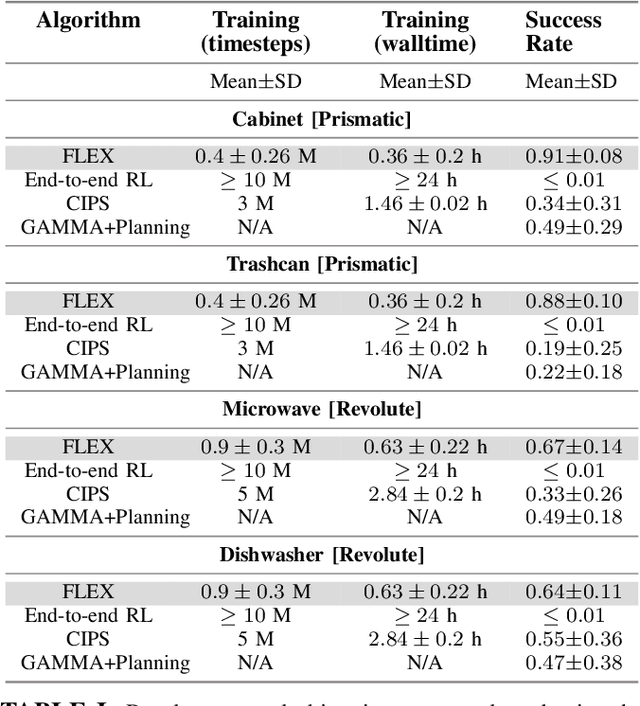
Abstract:Learning to manipulate objects efficiently, particularly those involving sustained contact (e.g., pushing, sliding) and articulated parts (e.g., drawers, doors), presents significant challenges. Traditional methods, such as robot-centric reinforcement learning (RL), imitation learning, and hybrid techniques, require massive training and often struggle to generalize across different objects and robot platforms. We propose a novel framework for learning object-centric manipulation policies in force space, decoupling the robot from the object. By directly applying forces to selected regions of the object, our method simplifies the action space, reduces unnecessary exploration, and decreases simulation overhead. This approach, trained in simulation on a small set of representative objects, captures object dynamics -- such as joint configurations -- allowing policies to generalize effectively to new, unseen objects. Decoupling these policies from robot-specific dynamics enables direct transfer to different robotic platforms (e.g., Kinova, Panda, UR5) without retraining. Our evaluations demonstrate that the method significantly outperforms baselines, achieving over an order of magnitude improvement in training efficiency compared to other state-of-the-art methods. Additionally, operating in force space enhances policy transferability across diverse robot platforms and object types. We further showcase the applicability of our method in a real-world robotic setting. For supplementary materials and videos, please visit: https://tufts-ai-robotics-group.github.io/FLEX/
Curiosity-Driven Imagination: Discovering Plan Operators and Learning Associated Policies for Open-World Adaptation
Mar 06, 2025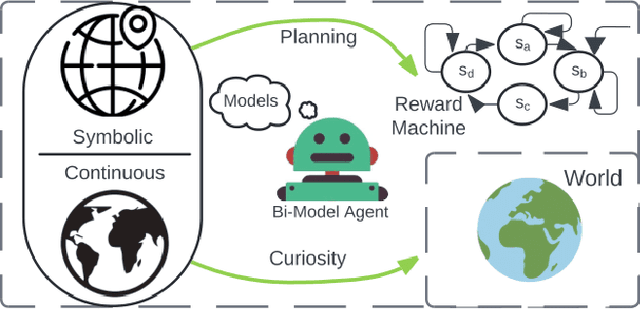
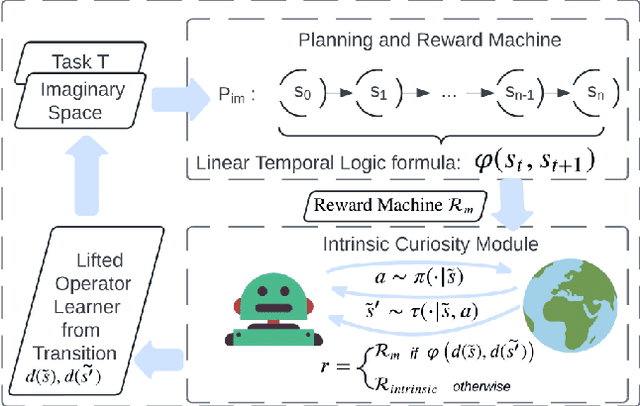

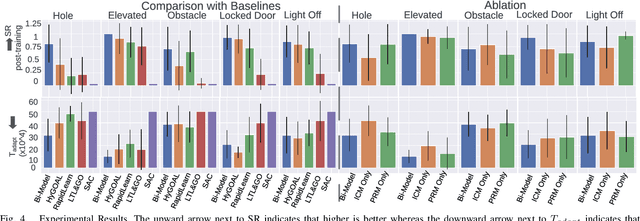
Abstract:Adapting quickly to dynamic, uncertain environments-often called "open worlds"-remains a major challenge in robotics. Traditional Task and Motion Planning (TAMP) approaches struggle to cope with unforeseen changes, are data-inefficient when adapting, and do not leverage world models during learning. We address this issue with a hybrid planning and learning system that integrates two models: a low level neural network based model that learns stochastic transitions and drives exploration via an Intrinsic Curiosity Module (ICM), and a high level symbolic planning model that captures abstract transitions using operators, enabling the agent to plan in an "imaginary" space and generate reward machines. Our evaluation in a robotic manipulation domain with sequential novelty injections demonstrates that our approach converges faster and outperforms state-of-the-art hybrid methods.
Probing a Vision-Language-Action Model for Symbolic States and Integration into a Cognitive Architecture
Feb 06, 2025Abstract:Vision-language-action (VLA) models hold promise as generalist robotics solutions by translating visual and linguistic inputs into robot actions, yet they lack reliability due to their black-box nature and sensitivity to environmental changes. In contrast, cognitive architectures (CA) excel in symbolic reasoning and state monitoring but are constrained by rigid predefined execution. This work bridges these approaches by probing OpenVLA's hidden layers to uncover symbolic representations of object properties, relations, and action states, enabling integration with a CA for enhanced interpretability and robustness. Through experiments on LIBERO-spatial pick-and-place tasks, we analyze the encoding of symbolic states across different layers of OpenVLA's Llama backbone. Our probing results show consistently high accuracies (> 0.90) for both object and action states across most layers, though contrary to our hypotheses, we did not observe the expected pattern of object states being encoded earlier than action states. We demonstrate an integrated DIARC-OpenVLA system that leverages these symbolic representations for real-time state monitoring, laying the foundation for more interpretable and reliable robotic manipulation.
NovelGym: A Flexible Ecosystem for Hybrid Planning and Learning Agents Designed for Open Worlds
Jan 07, 2024



Abstract:As AI agents leave the lab and venture into the real world as autonomous vehicles, delivery robots, and cooking robots, it is increasingly necessary to design and comprehensively evaluate algorithms that tackle the ``open-world''. To this end, we introduce NovelGym, a flexible and adaptable ecosystem designed to simulate gridworld environments, serving as a robust platform for benchmarking reinforcement learning (RL) and hybrid planning and learning agents in open-world contexts. The modular architecture of NovelGym facilitates rapid creation and modification of task environments, including multi-agent scenarios, with multiple environment transformations, thus providing a dynamic testbed for researchers to develop open-world AI agents.
A principled approach to model validation in domain generalization
Apr 02, 2023Abstract:Domain generalization aims to learn a model with good generalization ability, that is, the learned model should not only perform well on several seen domains but also on unseen domains with different data distributions. State-of-the-art domain generalization methods typically train a representation function followed by a classifier jointly to minimize both the classification risk and the domain discrepancy. However, when it comes to model selection, most of these methods rely on traditional validation routines that select models solely based on the lowest classification risk on the validation set. In this paper, we theoretically demonstrate a trade-off between minimizing classification risk and mitigating domain discrepancy, i.e., it is impossible to achieve the minimum of these two objectives simultaneously. Motivated by this theoretical result, we propose a novel model selection method suggesting that the validation process should account for both the classification risk and the domain discrepancy. We validate the effectiveness of the proposed method by numerical results on several domain generalization datasets.
Methods and Mechanisms for Interactive Novelty Handling in Adversarial Environments
Mar 06, 2023Abstract:Learning to detect, characterize and accommodate novelties is a challenge that agents operating in open-world domains need to address to be able to guarantee satisfactory task performance. Certain novelties (e.g., changes in environment dynamics) can interfere with the performance or prevent agents from accomplishing task goals altogether. In this paper, we introduce general methods and architectural mechanisms for detecting and characterizing different types of novelties, and for building an appropriate adaptive model to accommodate them utilizing logical representations and reasoning methods. We demonstrate the effectiveness of the proposed methods in evaluations performed by a third party in the adversarial multi-agent board game Monopoly. The results show high novelty detection and accommodation rates across a variety of novelty types, including changes to the rules of the game, as well as changes to the agent's action capabilities.
Trade-off between reconstruction loss and feature alignment for domain generalization
Oct 26, 2022Abstract:Domain generalization (DG) is a branch of transfer learning that aims to train the learning models on several seen domains and subsequently apply these pre-trained models to other unseen (unknown but related) domains. To deal with challenging settings in DG where both data and label of the unseen domain are not available at training time, the most common approach is to design the classifiers based on the domain-invariant representation features, i.e., the latent representations that are unchanged and transferable between domains. Contrary to popular belief, we show that designing classifiers based on invariant representation features alone is necessary but insufficient in DG. Our analysis indicates the necessity of imposing a constraint on the reconstruction loss induced by representation functions to preserve most of the relevant information about the label in the latent space. More importantly, we point out the trade-off between minimizing the reconstruction loss and achieving domain alignment in DG. Our theoretical results motivate a new DG framework that jointly optimizes the reconstruction loss and the domain discrepancy. Both theoretical and numerical results are provided to justify our approach.
* 13 pages, 2 tables
Joint covariate-alignment and concept-alignment: a framework for domain generalization
Aug 01, 2022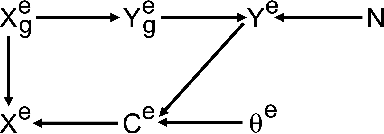

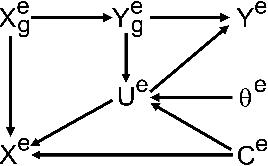
Abstract:In this paper, we propose a novel domain generalization (DG) framework based on a new upper bound to the risk on the unseen domain. Particularly, our framework proposes to jointly minimize both the covariate-shift as well as the concept-shift between the seen domains for a better performance on the unseen domain. While the proposed approach can be implemented via an arbitrary combination of covariate-alignment and concept-alignment modules, in this work we use well-established approaches for distributional alignment namely, Maximum Mean Discrepancy (MMD) and covariance Alignment (CORAL), and use an Invariant Risk Minimization (IRM)-based approach for concept alignment. Our numerical results show that the proposed methods perform as well as or better than the state-of-the-art for domain generalization on several data sets.
 Add to Chrome
Add to Chrome Add to Firefox
Add to Firefox Add to Edge
Add to Edge